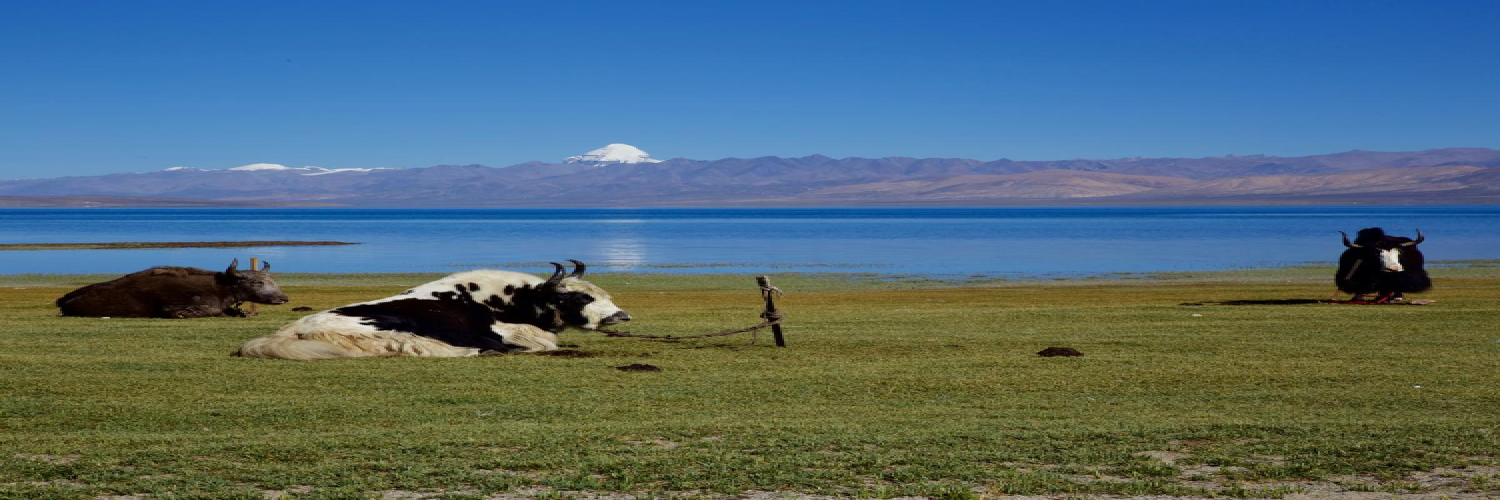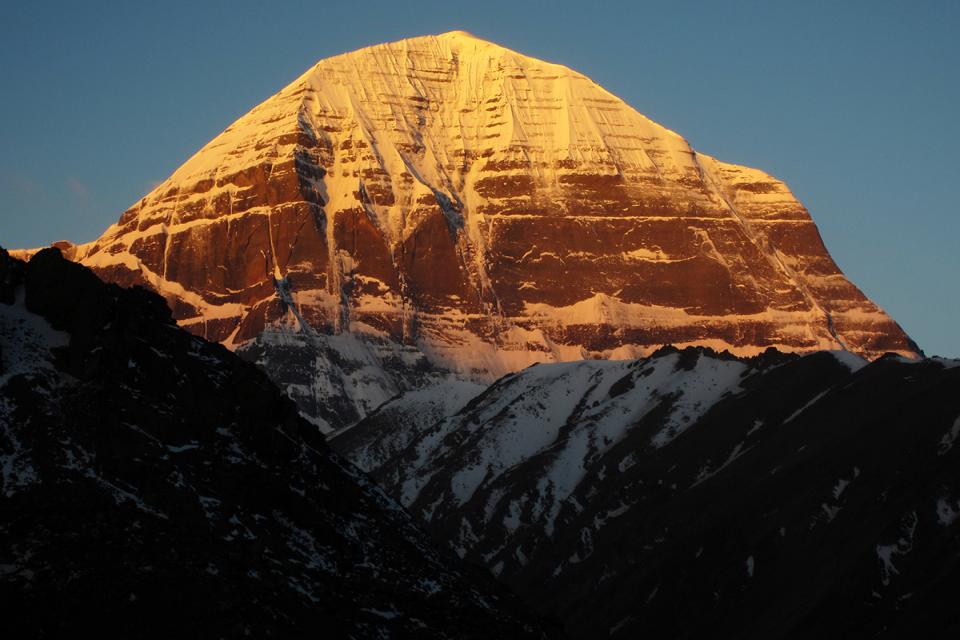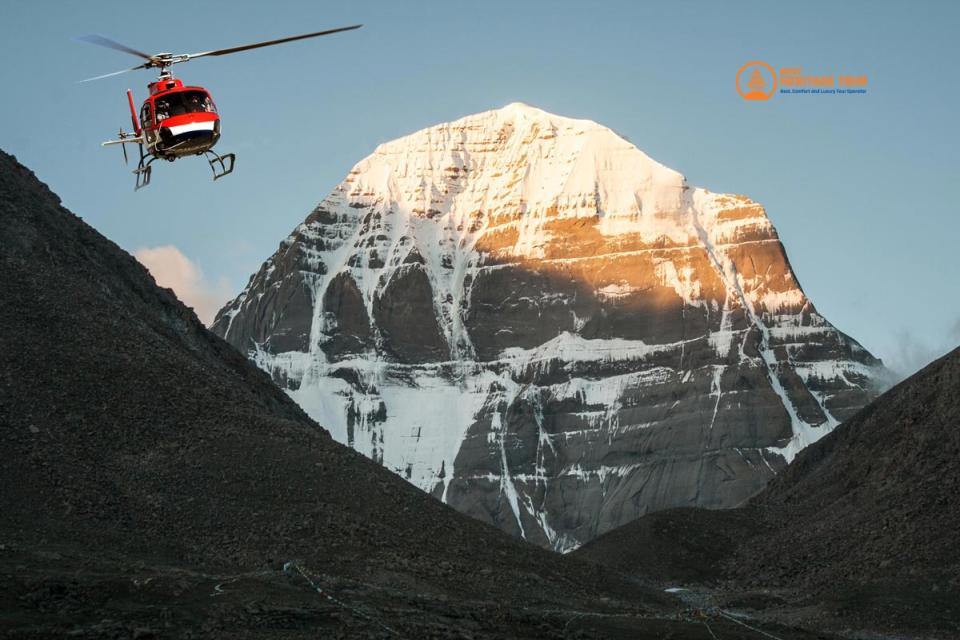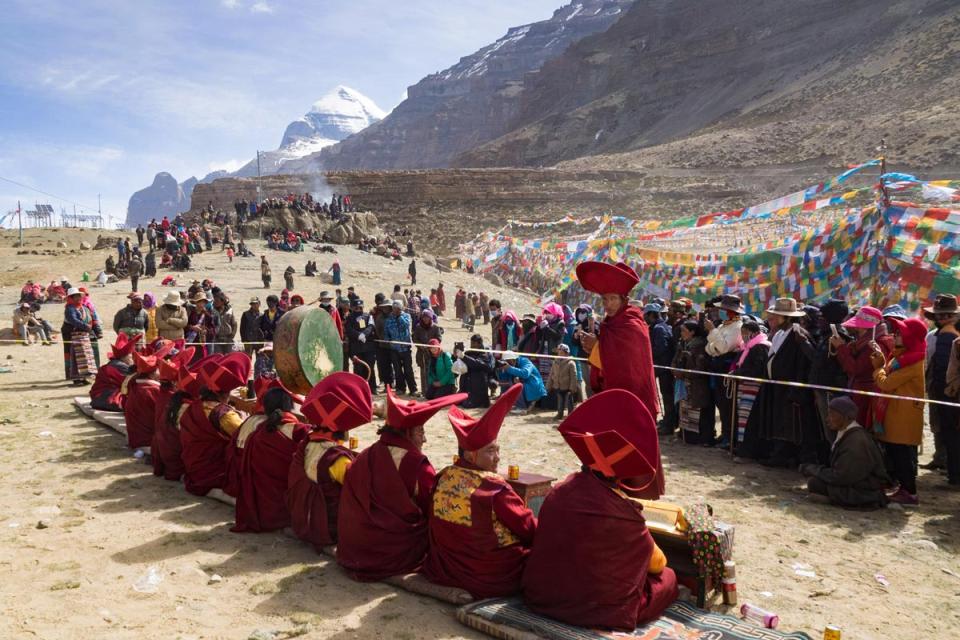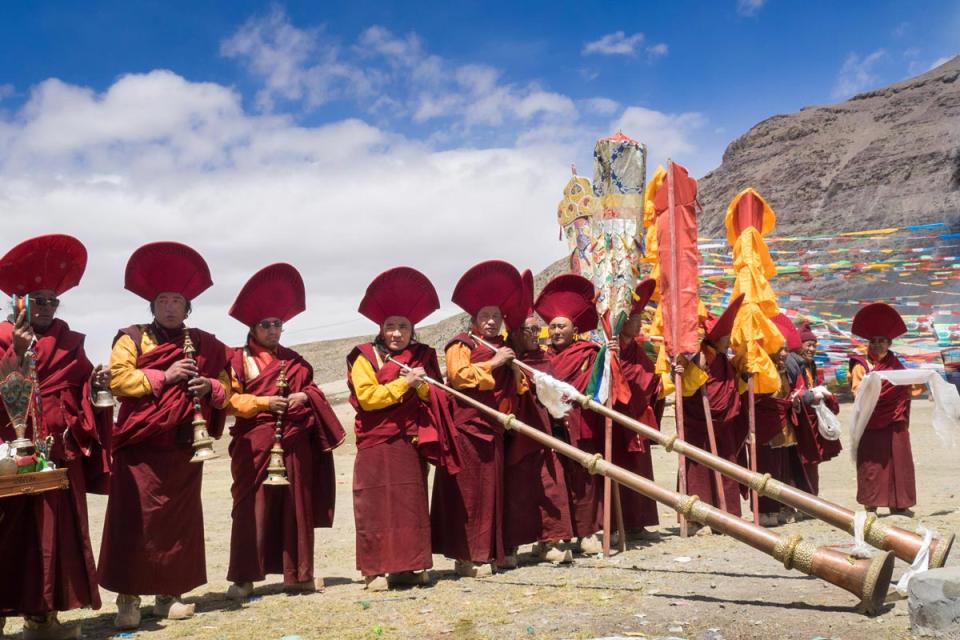There are journeys, and then there are pilgrimages that shake the soul, awaken the spirit, and purify a lifetime of karma. The Kailash Mansarovar Yatra is one such sacred journey. Tucked away in the remote and rugged landscapes of the Tibetan plateau lies Mount Kailash, a majestic peak that holds profound spiritual significance. Towering at 6,638 meters, this snow-capped mountain is not just a natural wonder- it is the mythological throne of Lord Shiva, revered across religions and borders. Adjacent to it is the ethereal Lake Mansarovar, believed to have been created in the mind of Lord Brahma before manifesting on Earth.
For religious devotees, spiritual seekers, cultural adventurers, and nature-loving trekkers, the Kailash Mansarovar Yatra is not just a journey- it's a sacred calling. Each step is steeped in legend and mysticism, echoing with the chants of ancient pilgrims. And when embarked upon from Nepal, this yatra becomes an even more profound and seamless spiritual experience.
If you're considering this once-in-a-lifetime pilgrimage, Best Heritage Tour offers the most reliable and spiritually guided experience tailored especially for Indian travelers. This is not just about reaching a destination- it’s about transforming your soul.
What is the Kailash Mansarovar Yatra?
The Kailash Mansarovar Yatra is one of the world’s oldest and most revered spiritual pilgrimages, transcending time, culture, and religious boundaries. It is a divine journey that takes the faithful through one of the harshest yet holiest landscapes on Earth. The goal? A darshan of Mount Kailash and a ritual bath in Lake Mansarovar- symbols of liberation, cleansing, and cosmic truth.
Mount Kailash is uniquely sacred to four major religions:
-
Hindus believe it is the home of Lord Shiva, the cosmic transformer and destroyer of ignorance. Performing a parikrama (circumambulation) around Kailash is believed to absolve the pilgrim of all sins.
-
Buddhists know the mountain as Mount Meru, the navel of the universe, symbolizing spiritual enlightenment and cosmic balance.
-
Jains revere it as the site where their first Tirthankara, Rishabhdev, attained moksha (liberation).
-
Bon followers, Tibet’s indigenous faith, believe Mount Kailash is the seat of spiritual energy and the axis of the world.
Just as significant is Lake Mansarovar, situated at 4,590 meters. This crystal-clear, circular lake is seen as the embodiment of purity. Bathing in its icy waters is said to purify the soul, cleanse the karma of past lives, and open the door to enlightenment.
Unlike a casual trek or a cultural tour, the yatra tests your physical endurance, spiritual devotion, and emotional resilience. But those who complete it often describe the journey as the most important experience of their lives- an awakening that stays with them forever.
Why Start the Yatra from Nepal?
Embarking on the Kailash Mansarovar Yatra from Nepal offers distinct advantages that are both spiritual and practical, especially for Indian pilgrims. Nepal is not just a geographic gateway- it’s a spiritual haven that adds profound depth to your pilgrimage.
1. Spiritual Prelude in Kathmandu
Nepal’s capital, Kathmandu, is home to some of the most sacred Hindu and Buddhist temples in the world. Starting your yatra here allows you to offer prayers at sites like:
-
Pashupatinath Temple - a major Shiva shrine where your intentions for the pilgrimage can be sanctified.
-
Budhanilkantha - the floating Vishnu statue symbolizing surrender and protection.
-
Swayambhunath and Boudhanath Stupas - offering blessings from the Buddhist tradition.
These visits spiritually align your journey, making your entry into Tibet more than just a change of border- it becomes a transition into deeper consciousness.
2. Simplified Permits & Logistics
Nepal-based operators like Best Heritage Tour are experienced in handling:
-
Group Chinese Visas
-
Tibet Travel Permits
All necessary documentation is efficiently managed in Kathmandu, reducing delays and confusion.
3. Flexible Route Options
From Nepal, you can choose from:
-
Overland tours via the Rasuwagadhi border into Tibet
-
Helicopter-assisted routes for time-sensitive or elderly pilgrims
These options make the yatra accessible to a wider range of devotees, including senior citizens and working professionals.
4. Enhanced Cultural Experience
Nepal offers a rich confluence of Hindu and Buddhist heritage. As you travel through the Nepali Himalayas and then into the stark Tibetan plateau, you witness a beautiful evolution of culture, language, food, and tradition- turning your spiritual journey into a cultural mixture.
Detailed Itinerary (Short Summary)
-
Days 1-2: Kathmandu sightseeing and permit preparation
-
Days 3-5: Travel through Syabrubesi to Kyirong, Saga, and finally Lake Mansarovar
-
Days 6-11: Holy bath, Parikrama (Dirapuk, Dolma La, Zuthulpuk)
-
Days 12–13: Return journey and departure
A complete, immersive route is available from Best Heritage Tour.
Highlights of the Yatra
This journey is not just about reaching a place-it’s about discovering a deeper version of yourself. Some highlights include:
- The First Glimpse of Kailash
After days of travel through barren, otherworldly terrain, catching the first view of Mount Kailash is an emotional moment. Many pilgrims report tears, goosebumps, or an overwhelming sense of peace and reverence. The mountain appears to shift forms- sometimes as Shiva, sometimes as a lingam, sometimes as a meditating yogi.
- Sacred Dip at Lake Mansarovar
The stillness of Mansarovar is otherworldly. Taking a ritual bath in its glacial waters is said to cleanse all sins and liberate one from the cycles of birth and death. Pilgrims collect bottles of water to take home and perform pujas during festivals and family ceremonies.
- The Parikrama (Kora) Around Mount Kailash
The 52 km circuit is more than a physical trek- it’s a metaphysical journey. It represents shedding ego, surrendering to divine will, and experiencing the unity of all creation. The chant of “Om Namah Shivaya” echoes in the valley as pilgrims step slowly, mindfully.
- Crossing Dolma La Pass (5,630m)
This is the most challenging day- symbolically considered the ‘death of the ego’. At the top, people leave behind old clothes, hair, photos, or even symbolic tokens to represent burdens they wish to shed. On the descent lies Gauri Kund, where Parvati is said to have bathed.
- Unity in Devotion
You’ll find pilgrims from all corners of India: Tamil bhaktas chanting Thevaram, Gujaratis singing bhajans, Marathi devotees reading Shiv Puran, and Bengali travelers offering Durga mantras. Despite language and regional differences, everyone shares the same goal- darshan of Kailash.
Best Time to Visit Kailash Mansarovar
The yatra is possible only during the warmer months, typically from May to September. Each period offers its own charm:
-
May-June: Best time for clear views of Mount Kailash; still cold but manageable.
-
July-August: Warmest time, though occasional rains can occur. High pilgrimage activity.
-
September: End of the season with crisp air, fewer crowds, and magnificent post-monsoon views.
Special Occasions
-
Full Moon (Purnima): Highly auspicious. The moonlight on the lake and mountain is spiritually potent.
-
Saga Dawa Festival: Commemorates Buddha’s birth, enlightenment, and death. A once-in-a-lifetime cultural experience if you’re lucky to align your dates.
Health, Safety & High-Altitude Preparation
Though spiritually uplifting, this yatra is also physically demanding. Here’s how to prepare:
Physical Training
-
Start a walking routine 2-3 months before departure.
-
Practice deep breathing and pranayama to strengthen lungs.
-
Include yoga and stretching to increase stamina and flexibility.
Acclimatization Tips
-
Spend acclimatization days wisely- light walking, no exertion.
-
Drink plenty of warm water and herbal teas.
-
Avoid alcohol and smoking completely.
Packing Essentials
-
High-quality thermal layers and windproof jackets
-
Waterproof boots, gloves, and rain gear
-
Dry fruits, energy bars, rehydration salts
-
Personal medicine kit (including AMS medication like Diamox)
-
Torch, power bank, sunscreen, and lip balm
Travel insurance with emergency evacuation coverage is mandatory and highly recommended.
Cultural Significance & Sacred Lore
Every inch of the Kailash region is drenched in spiritual energy and stories:
-
Mount Kailash as Mount Meru
Ancient Indian cosmology places Kailash as the central axis of the universe. It’s said that all cosmic energies converge here, and that the mountain spins subtly, influencing the world’s consciousness.
-
Ravana’s Devotion
Ravana, a great devotee of Shiva, is said to have performed intense penance to bring Mount Kailash to Lanka. Lord Shiva, pleased but unmovable, pressed it down with his toe- showing even the mighty must bow before the divine.
-
Parvati’s Meditation
In Tibetan lore, the snowstorms that suddenly engulf Kailash are said to be the playful dance between Shiva and Parvati. The rare breaks in the weather are considered glimpses into their eternal communion.
-
Footprints of Enlightenment
Great sages like Milarepa, Padmasambhava, and Gyalwa Gotsangpa meditated in the caves surrounding the region. Some caves are still used today by Tibetan monks practicing deep meditative retreats.
Conclusion
The Kailash Mansarovar Yatra from Nepal is not just about reaching a destination- it’s about transformation. It's where devotion becomes experience, where nature becomes prayer, and where silence speaks louder than words.
Whether you are a devout follower of Lord Shiva, a spiritual wanderer, or a curious cultural explorer, this journey offers unmatched rewards.
Ready to embark on your Kailash Mansarovar Yatra?
Best Heritage Tour is your trusted companion on this divine path.
Call/WhatsApp: +977-9851149197
Email: info@bestheritagetour.com
Website: www.bestheritagetour.com
Let this be the year you answer the call of the Himalayas. Om Namah Shivaya.
Author: Best Heritage Tour
Date: 6th June, 2025

